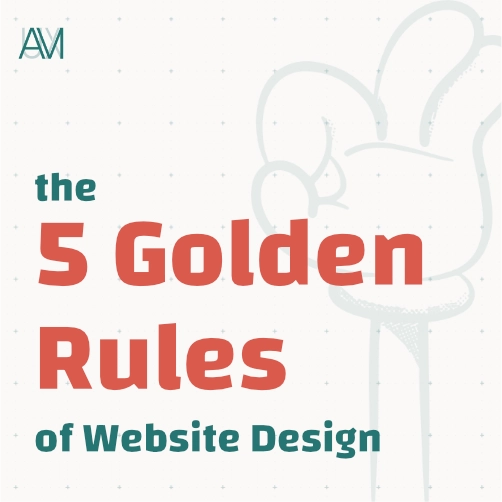

A lot of businesses have a website that looks "fine". Unfortunately, "fine" doesn't convert your users. A beautiful website that lacks strategy won't lead your users to the finish line.
Here are five golden rules of web deign every business owner should follow if you want your website to do more than take up space on the web.
If a user lands on your homepage, but can't understand what you do in under 5 seconds, they're bouncing away. Your heading shouldn't make users think, it should make them act.
For example: "We Empower Digital Dreams"
Sure, this sounds poetic, but it's far too vague. Are you a digital marketing agency? Branding agency? Website agency? No idea.
Instead try: "Custom Websites That Turn Visitors into Customers"
This version details what exactly the value that you offer your users. No guess work.
Remember, the above the fold is the most valuable peice of real estate on your website. Grab attention and demonstrate your value quickly and effectively.
The site you are designing isn't a portfolio. It's a sales business tool. Great design serves the user first, and the business second. You can have a "wow" factor, so long as it serves the user and doesn't distract from the goal of the site.
Before you focus on flashy animations and interactions, ask:
What is my user here to do?
How can I help them do it faster?
A good designer doesn't impose style; they interpret audience behavior. This is where the importance of user experience strategy comes in. Your website should always anticipate what your user expects and design for that expectation.

I talk about Cognitive Load Theory a lot, and here it is again. If a user lands on a site that bombards them with too many buttons, pop ups, and multiple competeing call to actions, you have cognitive overload. This distracts the user and destroys site conversion.
Simplicity doesn't mean "minimalism". It's about focus.
Every element on the page should have a purpose. If it doesn't move your user closer to action, ditch it.
Design is all about how you are communicating important information with your users and visual hierarchy is a great tool to use when you're creating you user flow. Remember, where users look first determines what they'll do next.
User contrast, spacing, and color to help create a strong visual path that leads from the headline, to benefit, to call-to-action.
Pro-Tip: Whitespace isn't empty space. It's strategic space that allows your design to breathe and helps guide your user through the intended flow. Use it wisely.
The majority of your users will be viewing your site via a mobile device. Around 60% of users visit websites using their phone. If your site isn't optimized for mobile, you've already increased your bounce rate. When you are designing your website for desktop always keep in mind how the design will scale down to mobile. If you can, design for the mobile first and scale up.
While these five golden rules may seem simple, they're effective. Simplicity drives clarity. Clarity drives conversions. If your site breaks one of the rules above, it's likely to negatively impact your conversion.
Invest in UX™
